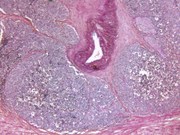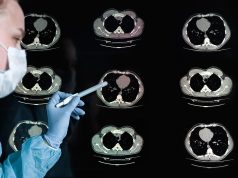Combination of the strategies identifies the most clinically important prostate cancers
TUESDAY, Dec. 11, 2018 (HealthDay News) — The combination of visual registration and image fusion should be used when targeted biopsy is being performed on men with suspected prostate cancer, according to a study published online Dec. 5 in European Urology.
Sami Hamid, M.D., from University College London, and colleagues evaluated 129 men with suspected prostate cancer who underwent two biopsies: one using the SmartTarget system and one in which surgeons could only visually review the magnetic resonance imaging (MRI) scans. Using advanced image processing and machine learning algorithms, the SmartTarget system enables a three-dimensional model of the prostate and cancer to be created for each patient from their MRI scans.
The researchers found that the two strategies combined detected 93 clinically significant prostate cancers (72 percent of the cohort). Each strategy detected 86 percent of these cancers and identified the 13 cases missed by the other. Biopsy-related adverse events were seen in three patients (urinary retention, urinary tract infection, nausea, and vomiting), but during the study period, there was no difference in urinary symptoms, erectile function, or quality of life.
“As MRI-targeted biopsies require a very high degree of expertise and experience, we hope that the imagery displayed by SmartTarget will help to bring high accuracy prostate cancer diagnosis to a much wider range of patients and hospitals,” a coauthor said in a statement.
Several authors disclosed financial ties to imaging-related companies, including SmartTarget.
Copyright © 2018 HealthDay. All rights reserved.








